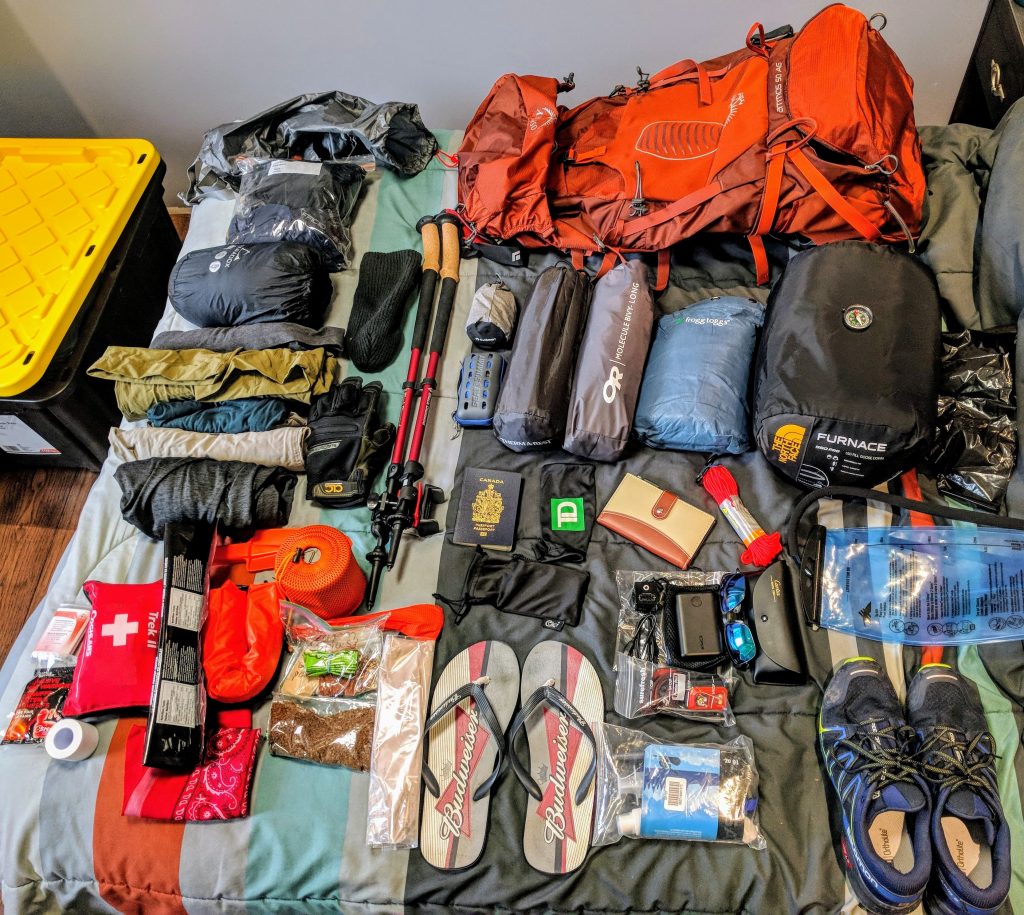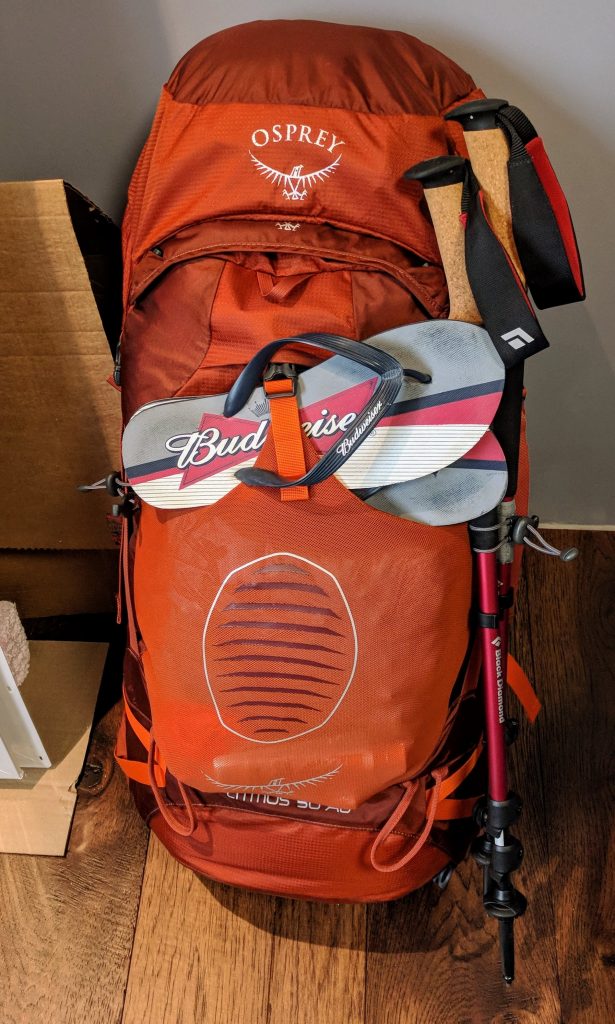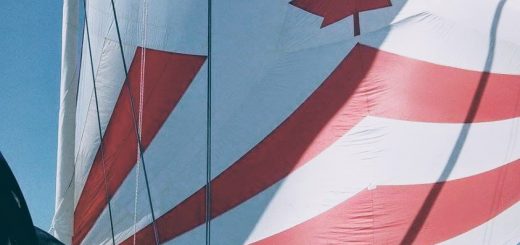What Gear To Take on the Appalachian Trail

Doing any long term hike, you’re going to need to plan out your gear. When I was planning to hike the Appalachian Trail, I spent hours on end researching the best gear to get. I ended up on the list below. Do note: There are things I ended up taking that I later sent home; I’ll talk about those at the end of this post.
The Final List:
What I sent home
Outdoor Research Molecule Bivy Sack
I brought this with me just in case my partner and I became separated since she was carrying the Tent. This is one of those edge cases that I didn’t know if I needed or not. I assumed I did but it later became apparent on trail that we’d be at the same destinations at the end of day on trail. Sending this home lightened my load by ~1.7 lbs.
Sawyer Squeeze Accessories
I love the sawyer squeeze water filter, its fantastic. But during the time on the trail, I realized I didn’t need all the little accessories that It came with. I ended up storing the squeeze on the top of my smart water bottle as most people on trail do. The squeeze pouch wasn’t needed because I used the smart water bottle to squeeze water and fill up my water bladder.
Rain Pants
I brought the frogg toggs rain suit with me, and didn’t end up using the rain pants at all. I only really used the rain coat once every few weeks as well, only during major downpours.
Spices/Protein Powder
I thought I was going to be a fancy cook on the adventure, but I never used the spices and things I brought with me for cooking. I ended up mainly eating knorr sidekicks with mash potatoes for dinners and tuna wraps for lunches.
Micro Towel
I brought a pocket towel with me that I thought I’d use everyday. I ended up not using it because It was in the bottom of my bag and when I pulled it out to use, it wouldn’t dry me off at all. I ended up using my bandanna for drying myself off and just drip drying as needed on trail.
Top of my Osprey Pack
I found I didn’t have anything in the top of my pack and decided to send that home. I did later regret this decision as having outside pockets is fantastic for storing snacks in. You sure do get hungry on the trail!
What I learned
1. You don’t need all that edge case gear!
What do I mean by “edge case”? I mean, when you think you’re going to need that third pair of socks because the first two might get dirty. Or the big can of bear spray that takes up too much space that you’ll never need to use. The climbing rope because you saw it on a “Walk in the Woods”. Not saying I took all of this. But when you’re thinking about doing a long hike, items like these may come into your mind. You need to keep to the essentials because you’re going to be carrying all this on your back for 6 to 12 hours a day.
2. Your heaviest items will be your food and water.
Did you know 1 liter of water weights 2 lbs? I ended up carrying 3.5 liters of water via a 1 liter smart water bottle and 2.5 liter water bladder. Looking back, I would have only filled up the water bladder with 1 liter of water as an emergency reserve and used my smart water bottle more often. Filling it at streams as I went.
I always carried more food then I needed. If you know you’re going to be 3 days before the next town, you don’t need to carry 5 days worth of food! Stay light as 5 days of food can weigh upwards of 10+lbs!
3. Keep it simple
Make sure you have the essentials, a bag, sleeping bag, sleeping pad and tent. Beyond that, ensure you have water filtration, and a food bag. Everything else are just additional items that make your life on trail easier. You need to balance needs and wants in order to keep within your money and weight budgets.
4. One pair of clothes is fine
On the trail you’re going to be smelly all the time.. if you resupply in towns regularly (as most do), you can wash a single pair of clothes and wear your rain suit when doing laundry. Be sure to pick quick drying clothes when hiking, assuming you’re hiking in the summer months.

Conclusion
Selecting gear can be very exciting but in the end you only need a few key essentials. Keeping a balance between cost and weight is paramount on trail as it’ll allow you to be able to travel farther since you won’t be carrying as much weight on your back and the extra money you didn’t spend on gear will help you on trail for resupplies and zero days when you want to stay in a hostel.
I highly recommend using https://lighterpack.com. As it is a great resource to help keep your costs in check while also keeping a tally on the weight of your pack.
If you’re planning a new adventure and want some help, comment below regarding your gear choices. I’m glad to help! I plan on putting out some more posts focusing on specific gear. So stay tuned.
Happy trails! – Snickerdoodle
